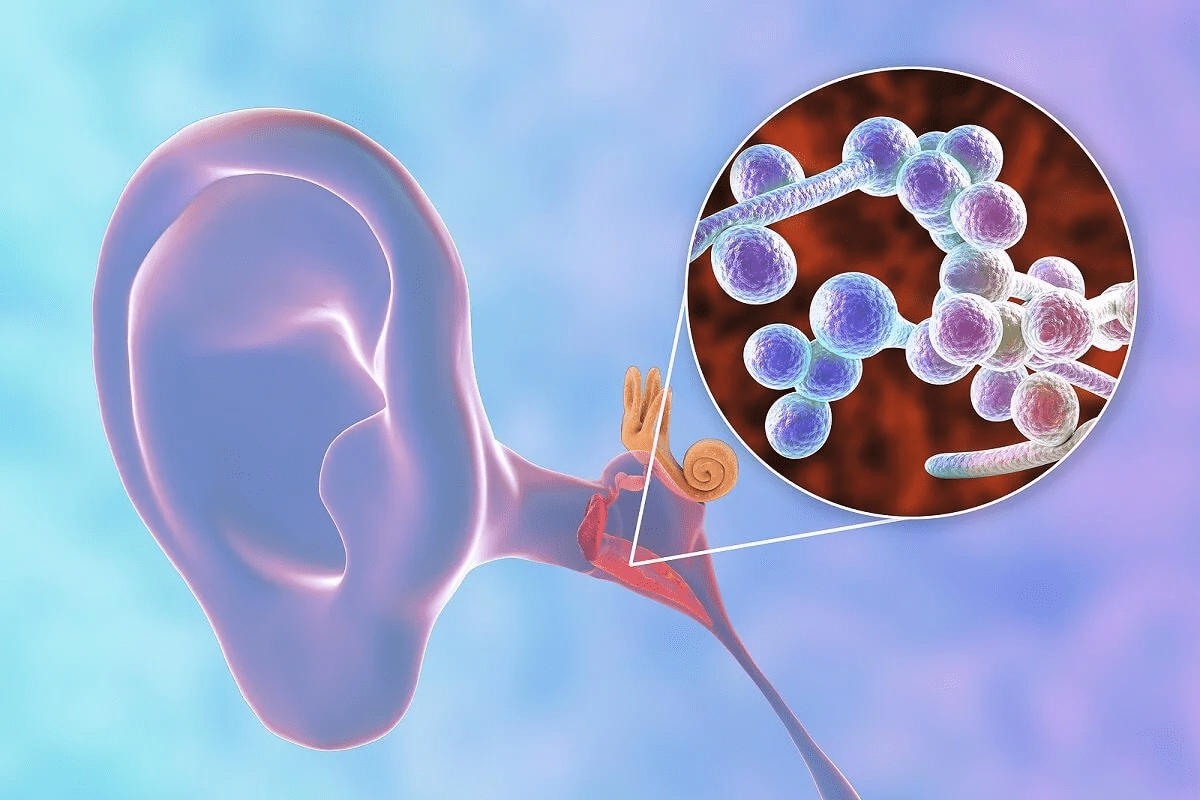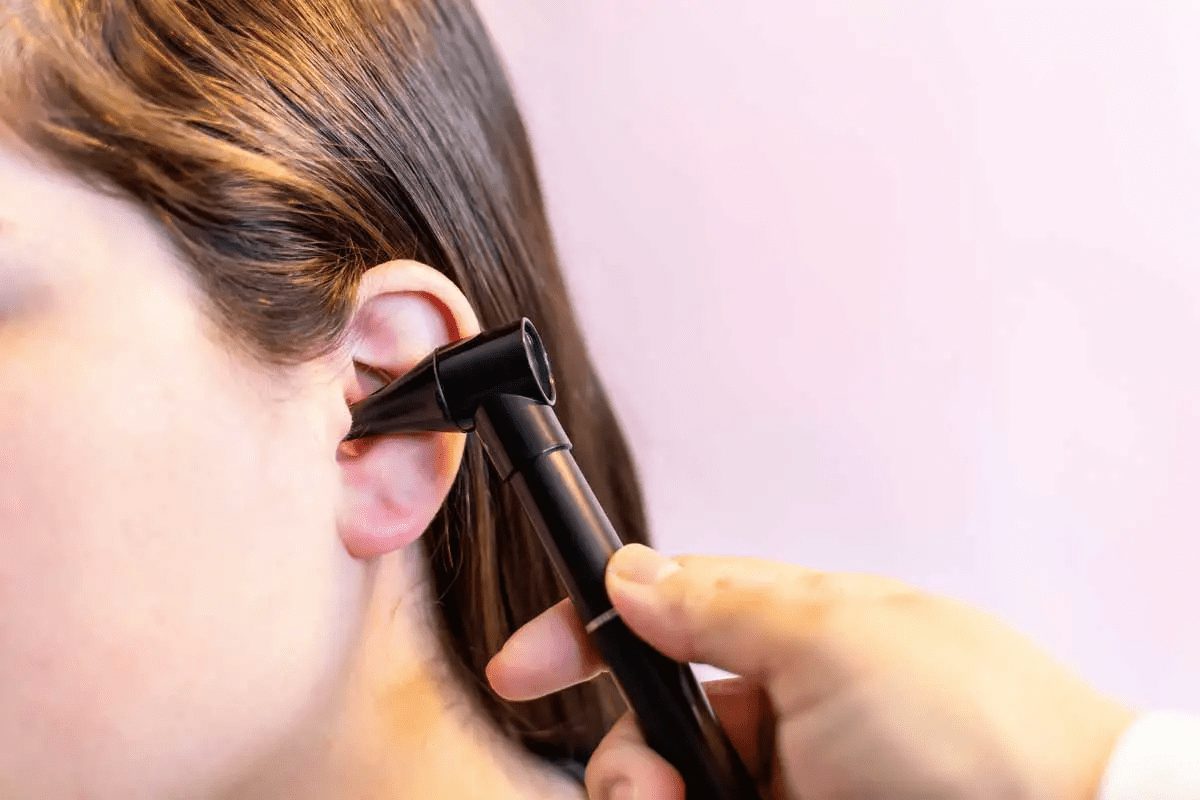
Earwax buildup can cause ear infections and even hearing loss if not treated. A simple and effective remedy is warm oil therapy. It softens hardened cerumen and helps restore ear health.
Studies show that certain oils can remove earwax. Warm olive oil is a well-known home remedy for earwax removal and infection treatment. By understanding warm oil therapy, you can safely treat ear infections and prevent future problems.
Using warm oil for earwax ear infection relief—learn the correct, cautious method and when to avoid it (e.g., if the eardrum is ruptured).

It’s important to know how common earwax problems are to take care of our ears. Earwax helps protect our ears, but too much can cause problems.
Earwax buildup is common, affecting many people. Studies show it affects up to 6% of the general population, 10% of kids, and over 30% of the elderly and those with cognitive issues in the U.S.
Earwax buildup is a big issue across different ages and groups. For example:
Earwax buildup can really hurt your hearing. You might notice:
When earwax blocks the sound waves, it can cause hearing loss. This loss is usually temporary and can be fixed by removing the earwax.
Because earwax problems are so common, a lot of earwax removals happen in the U.S. About 150,000 wax removals happen every week. This shows we need good ways to manage earwax.
Understanding earwax buildup is key to keeping our ears healthy. Next, we’ll look at how earwax protects our ears and why it’s important for ear health.

Earwax is key to keeping our ears healthy. It’s a natural substance made by glands in our ear canal.
Earwax keeps the ear canal moist. This stops it from getting too dry, which can cause itchiness and discomfort. It helps prevent irritation and inflammation by keeping the ear canal moist.
Earwax also fights off infections with its antibacterial properties. It creates a barrier that stops bacteria and other harmful organisms from growing. This is vital in preventing ear infections, which can be painful and serious.
Studies show olive oil is good for ear infections. It softens earwax, helping the ear to naturally get rid of it. This reduces the chance of infection.
So, does olive oil help with ear infections? Yes, it can be a useful tool in managing and preventing them by keeping the ear healthy.
Earwax also protects the ear canal from water and foreign objects. It acts as a barrier, trapping dust, dirt, and other small particles. This is important for keeping the ear safe, like when swimming or bathing.
In summary, earwax has many protective roles that are essential for ear health. By understanding these, we can take better care of our ears and avoid problems.
Earwax and ear infections are closely linked. Each can affect the other. It’s key to understand how earwax impacts ear health and vice versa.
Too much earwax can lead to infections. It blocks the ear canal, trapping bacteria. This can cause infections, mainly if the wax is deep in the canal.
Key factors contributing to infection:
Infections can also make earwax buildup worse. When the ear is infected, it may produce more earwax. This can start a cycle where the infection and earwax buildup worsen each other.
“The ear’s natural response to infection can sometimes lead to increased earwax production, complicating the condition.” – Medical Expert, ENT Specialist
It’s important to tackle both earwax and infections at the same time.
Spotting symptoms early can prevent bigger problems. Signs of earwax-related issues include:
Symptom | Description |
Earache | Pain or discomfort in the ear |
Hearing Loss | Temporary reduction in hearing ability |
Tinnitus | Ringing or buzzing sounds in the ear |
Itching | Sensation of itchiness in the ear canal |
If you notice these symptoms, think about earwax’s role. Seeking professional advice is a good idea.
Understanding earwax and ear infections is key to good ear health. Recognizing signs and acting fast can prevent complications. This helps keep your ears healthy.
Warm oil treatments are a proven home remedy for earwax and infections. They have been used for a long time to help with earwax buildup and infections.
Studies show that oils can remove earwax effectively. Warm olive oil is a traditional remedy for earwax and infections. It softens earwax, making it easier to remove.
A study in the Journal of Laryngology and Otology found olive oil softens earwax well. This supports using warm oil as a first treatment for earwax problems.
Warm oil softens and loosens earwax, easing discomfort and preventing infections. Impacted earwax can cause pain and affect hearing.
The oil’s warmth dissolves earwax, helping it drain naturally. This is great for those with earwax buildup.
Benefits | Description |
Softens Earwax | Makes it easier to remove impacted earwax |
Loosens Earwax | Facilitates natural drainage of earwax |
Pain Relief | Provides comfort by reducing pressure caused by impacted earwax |
Warm oil treatments soften earwax and offer pain relief and anti-inflammatory effects. These are key in managing ear infections. The anti-inflammatory properties of oils like olive oil reduce swelling and pain.
By easing the pressure from earwax and reducing inflammation, warm oil treatments offer significant relief. They help those with earwax-related ear problems.
Choosing the right oil is key to treating ear infections. There are many oils to pick from. It’s important to know the good and bad of each to find safe and effective relief.
Olive oil is often recommended for earwax removal and treating infections. Its thick texture and makeup help soften earwax. Studies show olive oil can help with earwax buildup and pain. Make sure to warm it up before use to avoid dizziness.
Mineral oil and baby oil are also good for softening earwax. Mineral oil is gentle, making it great for sensitive ears. But, baby oil has added scents, which might not be good for everyone, like those who are sensitive to smells.
Ear oils like mullein, garlic, and coconut are popular for their health benefits. Mullein oil is anti-inflammatory, garlic oil fights microbes, and coconut oil has both properties. But, use them carefully and in the right amounts to avoid irritation.
Not all oils are good for ear infections. Essential oils are too strong and can irritate or cause allergic reactions. Oils like tea tree oil are too harsh for the ear without proper dilution. Also, avoid oils that make you uncomfortable or allergic.
Choosing the right oil means thinking about your needs, allergies, and the type of infection. Talking to a healthcare professional can help find the best oil for you.
Starting a warm oil treatment for ear infections and earwax issues needs careful preparation. We know that the right steps before using warm oil can greatly improve the treatment’s success.
To begin, we must gather some essential items. These include:
Having these supplies ready ensures we can start the treatment smoothly.
It’s important to warm the oil to a comfortable temperature. We suggest warming the oil by placing the bottle in a bowl of warm water for a few minutes. The ideal temperature is about 98°F (36.7°C). Always test the temperature before applying it to the ear to avoid discomfort or injury.
Creating a cozy environment for the warm oil treatment is key. We recommend finding a quiet, warm spot where we can lie down without interruptions. The area should be draft-free to prevent discomfort during the treatment. By setting up a comfortable space, we can relax and let the warm oil work its best.
By following these steps, we can ensure a safe and effective warm oil ear treatment. Proper preparation is essential for relieving ear infections and earwax issues.
Using warm oil for ear infections is simple but requires careful steps. We need to follow a detailed guide to ensure safe and effective treatment.
Before using warm oil in your ear, test its temperature first. Place a few drops on your inner wrist. If it feels warm but not hot, it’s ready. Never use oil straight from the bottle or microwave without checking its temperature.
Getting the right position is important for applying warm oil. Lie on your side with the ear you want to treat facing up. Keep your head slightly raised on a pillow to stop the oil from dripping out. This helps the oil get deeper into your ear canal.
Use a dropper to put 2-3 drops of warm oil into your ear canal. Make sure not to touch the dropper to your ear or any surface to keep it clean. The oil should fill the ear canal without overflowing.
After putting in the oil, gently massage the ear area in a circular motion. This helps loosen earwax and spreads the oil evenly. Massage for about 30 seconds to make the treatment more effective.
To better understand the benefits and techniques of warm oil application, let’s look at different oils for ear infections:
Oil Type | Benefits | Precautions |
Olive Oil | Natural antibacterial properties, moisturizes ear canal | May not be suitable for individuals with olive allergies |
Mineral Oil | Gentle, non-comedogenic, effective for earwax removal | Not recommended for ears with perforated eardrums |
Coconut Oil | Antimicrobial properties, pleasant aroma | May not be suitable for individuals with coconut allergies |
By following these steps and choosing the right oil, you can effectively treat earwax and ear infections with warm oil treatments.
Warm oil treatments can help with earwax and infections, but safety is key. Some conditions make using warm oil risky.
Don’t use warm oil if you have a perforated eardrum or discharge from the ear. It could make things worse. Also, if you have ear pain or hearing loss, talk to a doctor first.
Condition | Risk with Warm Oil Treatment |
Perforated Eardrum | Increased risk of infection |
Ear Discharge | Potential for worsening infection |
Ear Pain or Hearing Loss | Masking symptoms, delaying diagnosis |
Watch for signs of bad reactions to warm oil. Look out for increased pain, itching, or dizziness. If you see these, stop using it and see a doctor.
Be extra careful with children or the elderly and warm oil. Their ears are smaller and more delicate. Older people might have health issues that could get worse. Always check with a doctor before treating them.
To avoid more problems, follow good hygiene and use the oil right. Make sure it’s not too hot and don’t put things in your ear. Regular doctor visits can catch issues early.
Knowing when to get help is key to avoiding serious problems with earwax and infections. Warm oil treatments work for some, but sometimes, you need a doctor’s help to avoid bigger issues.
Some symptoms mean you need to see a doctor fast. Look out for severe ear pain, fever, discharge, hearing loss, or feeling like your ear is full. These signs can lead to serious problems like mastoiditis or permanent hearing loss.
“Ear infections can lead to serious complications if not properly treated. Recognizing the warning signs is key to seeking timely medical care.”
If your symptoms keep coming back or don’t go away with warm oil, it’s time to see a doctor. Earwax buildup or infections that keep coming back might mean there’s a bigger problem. Ignoring these signs can lead to bigger health issues.
Doctors have many ways to remove earwax, like irrigation, tools, or curettes. The method depends on the wax and your ear’s health. Getting it done by a pro is safer and works better than trying it yourself.
At a doctor’s visit for ear issues, they’ll look at your ear with an otoscope. They’ll then talk about the best treatment, like removing wax or antibiotics. Being ready to share your symptoms helps a lot.
Understanding when to get professional help is important for your ear health. It helps avoid complications and ensures you get the right treatment.
Keeping your ears healthy is key to overall well-being. Regular ear care and preventive steps can stop earwax buildup and infections. Using olive oil for ear infections is a simple, effective way to help.
Warm oil treatments have shown to soften and loosen earwax. This helps in relieving earwax infections. It’s important to add warm oil treatments to your ear care routine.
This can prevent earwax buildup and infections. It greatly reduces the risk of earwax infections. Being aware of earwax-related problems and seeking help when needed is also important.
By following these preventive steps, we can keep our ears healthy for a long time. Regular check-ups and proper care help in catching and treating problems early. This avoids complications from earwax and infections.
Olive oil is a top choice for earwax removal and infection relief. It’s backed by research and tradition. You can also try mineral oil, baby oil, or specialized oils like mullein, garlic, and coconut oil.
Warm oil by placing the bottle in hot water or a warm bath. Make sure it’s not too hot by testing it on your wrist first.
Yes, warm oil can soften earwax, helping with infections. But, if you have a severe infection or a perforated eardrum, talk to a doctor first.
Apply warm oil 2-3 times a day, depending on your symptoms. If your symptoms get worse, see a doctor for advice.
Warm oil is usually safe but might cause some discomfort or redness. If you have severe pain, discharge, or fever, get medical help.
Yes, but with care. Talk to a pediatrician before using warm oil on kids. For the elderly, make sure the oil isn’t too hot and be careful to avoid accidents.
See a doctor for severe pain, discharge, fever, or if symptoms don’t get better. Also, if you have a perforated eardrum or think you have a serious infection, get help.
Yes, olive oil can help by softening earwax and reducing inflammation. It also has antibacterial properties to fight infection.
Yes, but check the oil’s temperature first. Make sure it’s not too hot to avoid discomfort or injury.
Generally, yes, but be careful. Avoid warm oil if you have a perforated eardrum or severe infection. Always check with a doctor if you’re unsure.
Baugh, R. F., Archer, S. M., Mitchell, R. B., Rosenfeld, R. M., Amin, R.,侧. R., . . . Witsell, D. L. (2011). Clinical Practice Guideline: Tonsillectomy in Children. Otolaryngology—Head and Neck Surgery, 144(1 Suppl), S1-S30. Retrieved from https://journals.sagepub.com/doi/full/10.1177/0194599810389949
Subscribe to our e-newsletter to stay informed about the latest innovations in the world of health and exclusive offers!
WhatsApp us